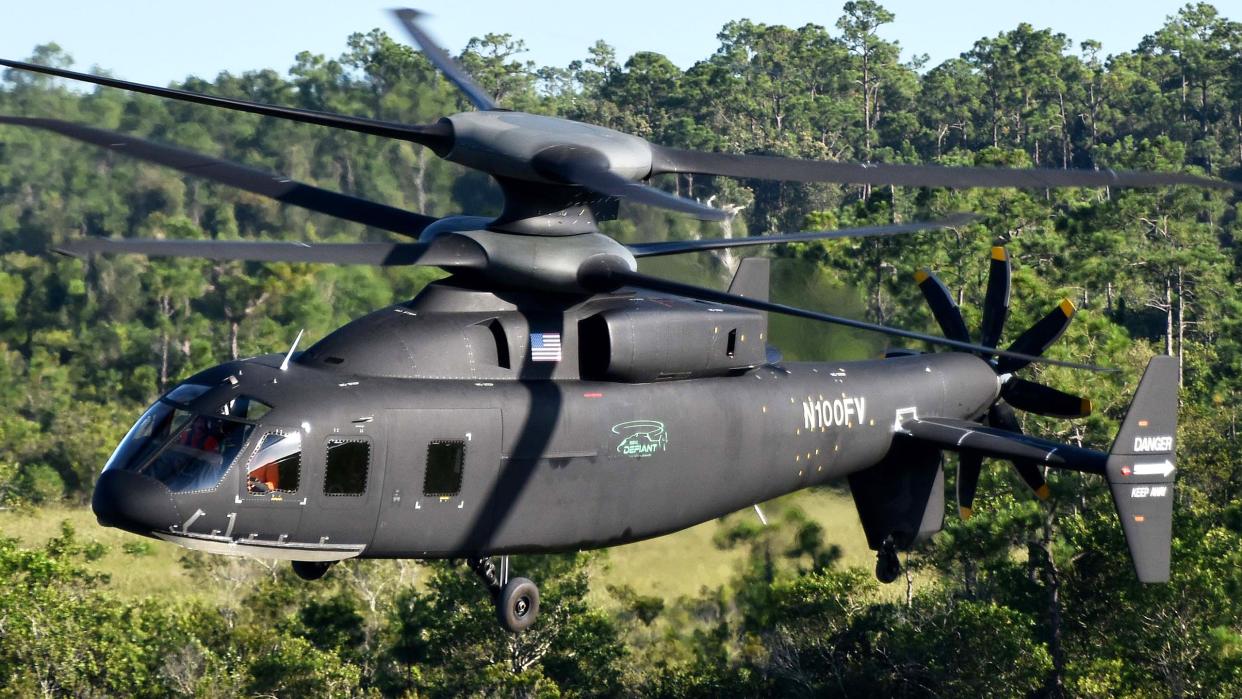Sikorsky's Protest Of Bell's V-280 Win Over Its SB>1 Shot Down

Bell's V-280 Valor-based win for the Future Long-Range Assault Aircraft — a high-speed replacement for many U.S. Army Black Hawks and possibly more — was a massive loss for the competing Sikorsky-Boeing team. A protest of that award was all but certain and one was indeed put forth. Now that protest has been resolved unfavorably for Sikorsky and Boeing and their SB>1 Defiant-based design.
Make sure to read our complete analysis of the Army's decision to push forward with the V-280 Valor-based design over the SB>1 Defiant-based design here.
V-280 Valor which Bell based its FLRAA bid on. (Bell)
The Government Accountability Office shed some light on why it made its decision to resolve the protest bid in favor of Bell. It also disclosed some aspects of why the Army chose Bell's concept over Sikrosky-Boeing's in the first place. Its statement reads, in part:
"Sikorsky challenged the agency’s assignment of a rating of unacceptable to its proposal under the engineering design and development evaluation factor, architecture subfactor, which ultimately rendered the proposal ineligible for award. Sikorsky also argued that the agency should have found Bell’s proposal to be unacceptable. Finally, Sikorsky challenged the agency’s evaluation under the engineering design and development factor and the product supportability factor; the cost/price evaluation; and the best-value tradeoff decision.
In denying the protest, GAO concluded that the Army reasonably evaluated Sikorsky’s proposal as technically unacceptable because Sikorsky failed to provide the level of architectural detail required by the RFP. GAO also denied Sikorsky’s various allegations about the acceptability of Bell’s proposal, including the assertion that the agency’s evaluation violated the terms of the solicitation or applicable procurement law or regulation. Finally, GAO dismissed Sikorsky’s additional arguments on the basis that Sikorsky was no longer an interested party to further challenge the procurement."
SB>1 Defiant next to a UH-60 Black Hawk it intended on replacing. (Sikorsky)
These comments are not flattering of Sikorsky-Boeing's justification of the protest or its original proposal. In response to the protest being ruled out, Sikorsky issued the following statement on behalf of it and Boeing:
“We remain confident the Lockheed Martin Sikorsky and Boeing team submitted the most capable, affordable and lowest-risk Future Long-Range Assault Aircraft solution. We will review the GAO’s decision and determine our next steps.”
The GAO said they are working to release a redacted version of their justification. Such a move would be welcome to some as the decision process related to the original award has remained somewhat opaque.
Now that the Army can move forward with Bell's FLRAA concept, not only does it threaten Sikorsky's dominance as the supplier of the backbone of the U.S. Army rotary wing fleet, but it also meant one concept, the V-280 Valor-based second-generation tilt-rotor, would be able to mature with Army backing under FLRAA.
V-280 Valor had more time in the air than the SB>1 with the prototype flying throughout its performance envelope over a number of years. (Bell)
Still, Sikorsky has another shot at getting its X-2 technology, on which the SB>1 Defiant is based, into the fleet. This comes in the form of the Raider-X, which features the same compound, counter-rotating, rigid-rotor design as the larger SB>1 that was passed over for Bell's design under FLRAA. Raider-X is competing against Bell's far more conventional design, the 360 Invictus, under the Future Armed Reconnaissance Aircraft (FARA) competition. This program aims to fill the void left by the retirement of the OH-58D Kiowa Warrior and replace a large number of AH-64 Apaches, as well.
Raider-X largely finished with construction and armed with dummy Hellfires and its chin-mounted gun. (Sikorsky) Bell's Invictus is also seen nearly finished with construction. (Bell)
As for the SB>1 itself, its future is less clear. We have reached out to Sikorsky to see if they will continue working on the type independently and look for other opportunities relating to it, but they had nothing further to add at this time.
Still, a lot has to go right between now and 2030 when the Army wants its first Bell FLRAA aircraft operational. Cost, not just in terms of acquisition but also in terms of operations and sustainment of a fleet of high-speed tilt-rotors, remains a major concern. But for now, second-generation tilt-rotor technology is where the Army is placing its future medium vertical lift bets.
Contact the author: tyler@thedrive.com

